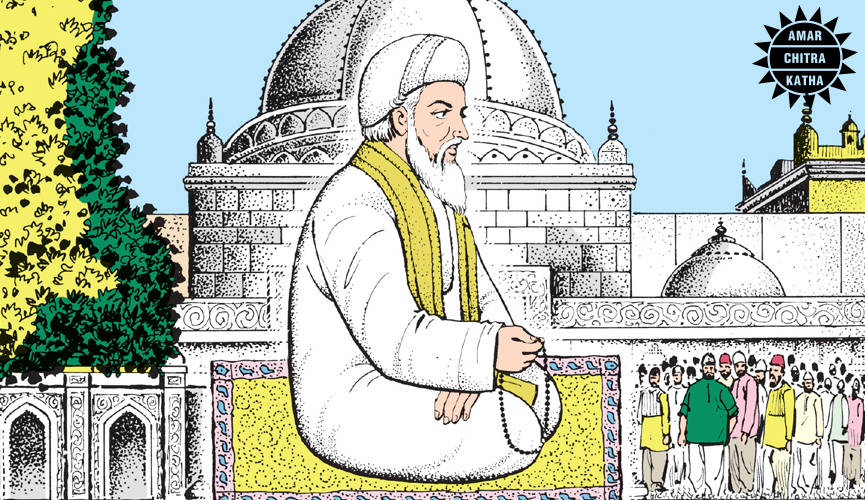The Sufi movement, which gained prominence between the 12th and 18th centuries, represents a vital chapter in the spiritual and cultural history of the Indian subcontinent. Characterized by its emphasis on mysticism, love, and a direct experience of the Divine, the movement transcended sectarian boundaries and contributed significantly to the region’s social and cultural fabric. This article explores the origins, evolution, and impact of the Sufi movement, highlighting key figures, incidents, and its enduring legacy.
Origins of Sufism
Early Roots: 8th to 11th Century
Sufism, as a mystical dimension of Islam, began to take shape in the early centuries of the Islamic faith, with influences from various philosophical and spiritual traditions. The term “Sufi” is believed to be derived from “suf,” referring to the woolen garments worn by early ascetics. Sufis sought a personal and experiential understanding of God, emphasizing inner purity and devotion over formal ritualism.
Arrival in the Indian Subcontinent: 11th Century
The arrival of Sufi mystics in the Indian subcontinent can be traced back to the 11th century, coinciding with the establishment of Muslim rule in regions like Punjab and Sindh. Sufi saints like Data Ganj Baksh (Ali Hajweri) and Baba Farid played pivotal roles in introducing Sufi thought to local populations, fostering a syncretic culture that blended Islamic teachings with local traditions.
Growth and Expansion of the Sufi Movement
Major Sufi Orders
By the 12th century, various Sufi orders, or “tariqas,” had emerged, each with its own teachings and practices. Some of the most notable included:
- Chishti Order: The Chishti Order, established in the 12th century by Khwaja Moinuddin Chishti, focused on principles of love, compassion, and selfless service to humanity.
- Suhrawardi Order: Established by Sheikh Shahab al-Din Suhrawardi, this order focused on community and adherence to Sharia, blending Sufi mysticism with a more structured approach to Islam.
- Qadiri Order: Founded by Sheikh Abdul Qadir Jilani in the 12th century, this order gained popularity for its emphasis on the spiritual authority of its founder and the practice of dhikr (remembrance of God).
Cultural Impact and Integration
The Sufi movement played a crucial role in fostering communal harmony in the Indian subcontinent. Sufi saints often welcomed followers from diverse backgrounds, emphasizing universal values of love, compassion, and equality. Their teachings and poetry resonated with the local populace, leading to a rich tapestry of cultural exchange that included music, dance, and art.
Key Incidents and Figures
The Era of Akbar: 16th Century
The Mughal Emperor Akbar (1542-1605) was a significant patron of Sufism. His interest in spiritual and philosophical dialogue led to the establishment of the “Din-i Ilahi,” a syncretic religion that sought to harmonize various faiths, including Hinduism and Islam. Akbar’s patronage of Sufi saints, like the renowned Mian Mir, exemplified the state’s recognition of Sufism’s role in promoting tolerance and unity.
The Influence of Sufi Poetry
The poetic expressions of Sufi saints like Kabir, and Bulleh Shah in the 15th and 16th centuries became instrumental in spreading Sufi ideals. Their verses, often composed in local languages, conveyed profound spiritual messages while addressing social issues, further bridging the gap between communities.
Proof that the Ramayana is the Real Story | Maya
Decline and Resurgence
Colonial Era: 18th to 19th Century
The Sufi movement faced challenges during the colonial period, particularly with the rise of reformist movements that sought to reinterpret Islam and counteract British influence. Sufi orders experienced a decline in authority and influence as political structures changed and new forms of social organization emerged.
Revival in the 20th Century
Despite these challenges, the Sufi movement saw a resurgence in the 20th century, particularly in response to the communal tensions and identity crises brought on by colonial rule. Sufi leaders and organizations reasserted their role in promoting peace and understanding, reinforcing Sufism’s relevance in contemporary society.
Parents’ Behavior and Astrology explained by Kukshita | Maya
The Sufi Influence
The Sufi movement has profoundly shaped the Indian cultural landscape by fostering a spirit of inclusivity and love that transcends religious and social boundaries. Through its emphasis on universal values, Sufism created a space where diverse communities could come together in shared devotion, enriching the cultural tapestry with vibrant expressions of art, poetry, and music. The teachings of Sufi saints continue to inspire generations, promoting compassion and understanding in a society often marked by division. By encouraging community service and humanitarian values, the Sufi movement has left a lasting legacy that reminds us of the transformative power of empathy and connection, inviting us to seek deeper relationships with both the Divine and each other.



